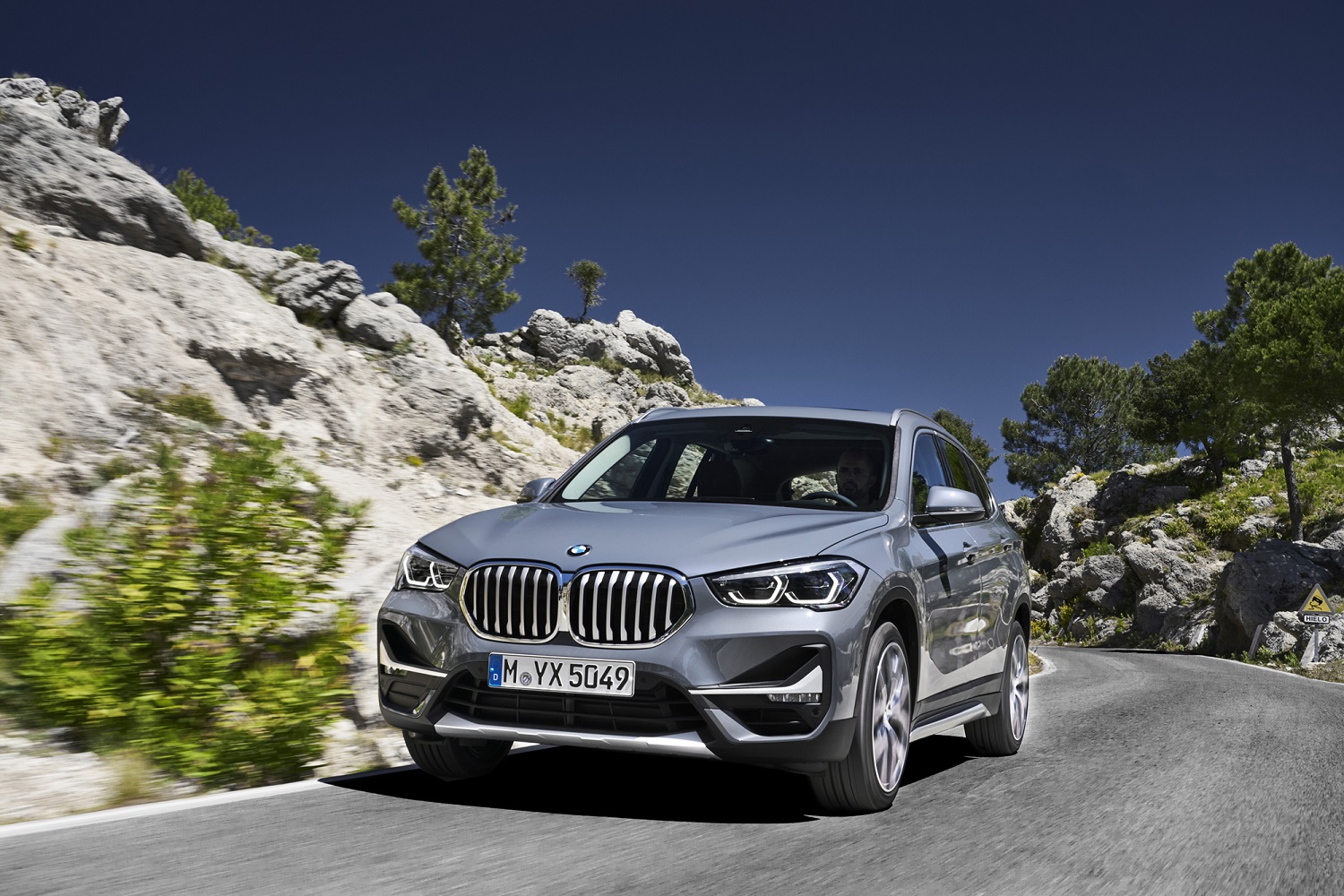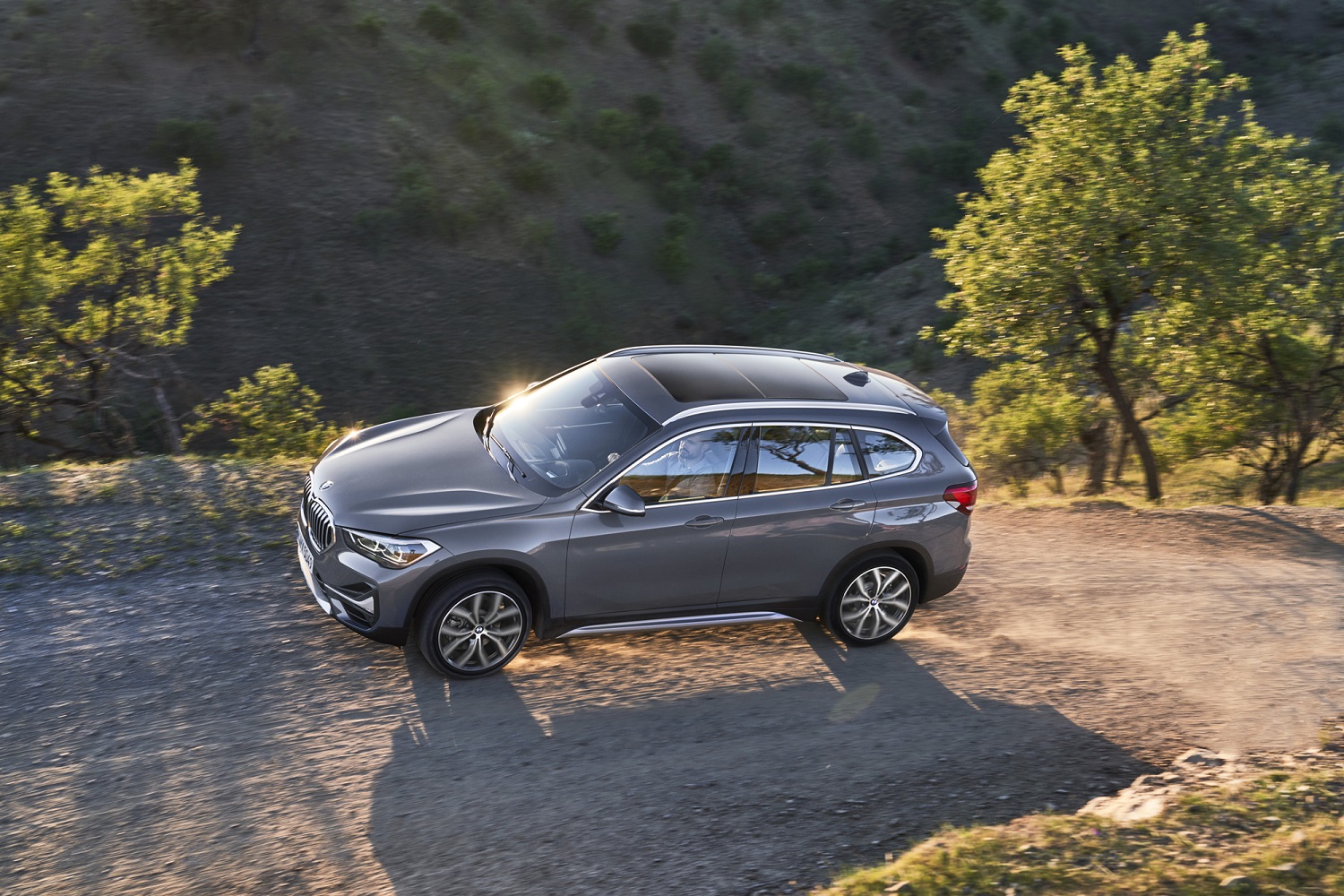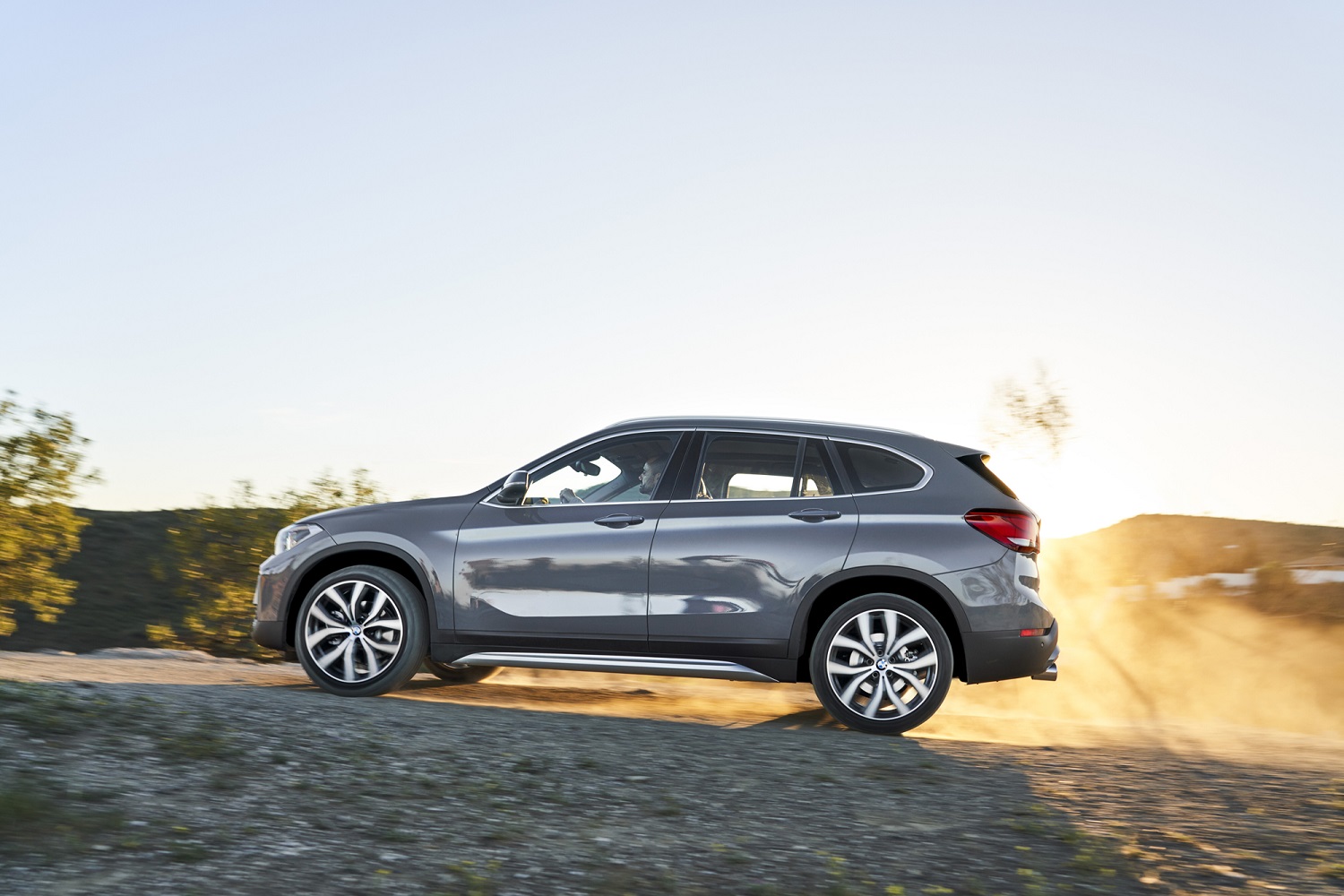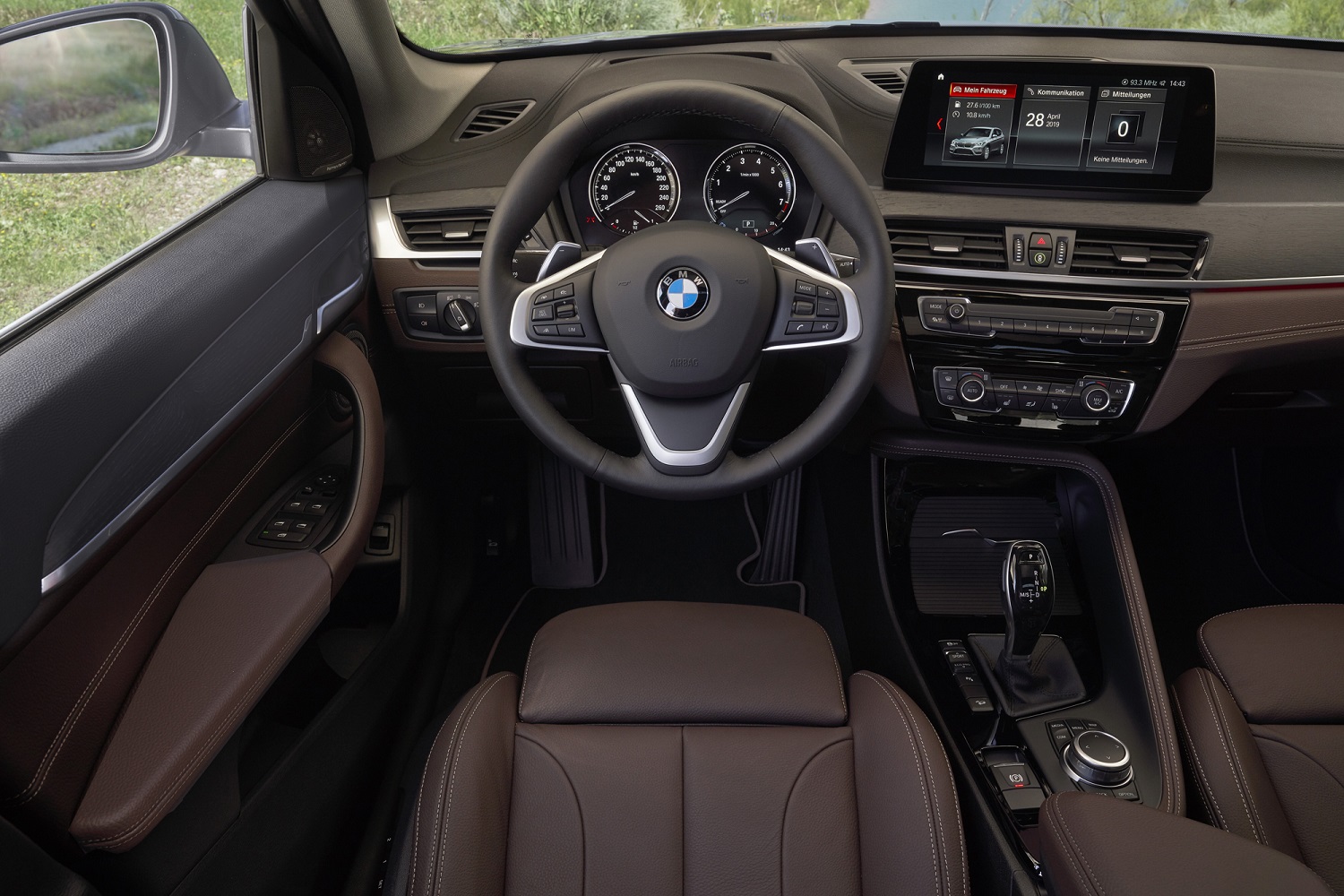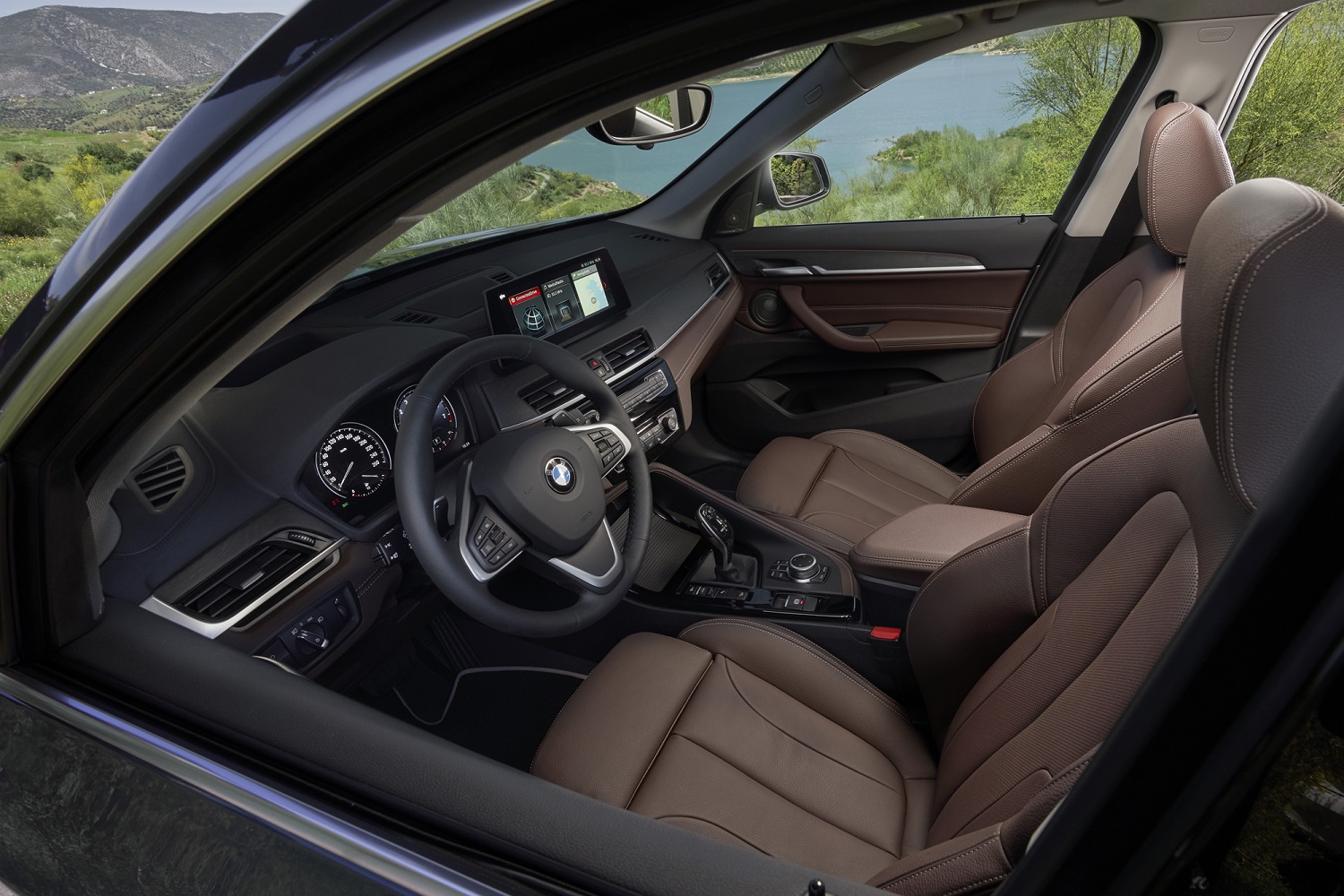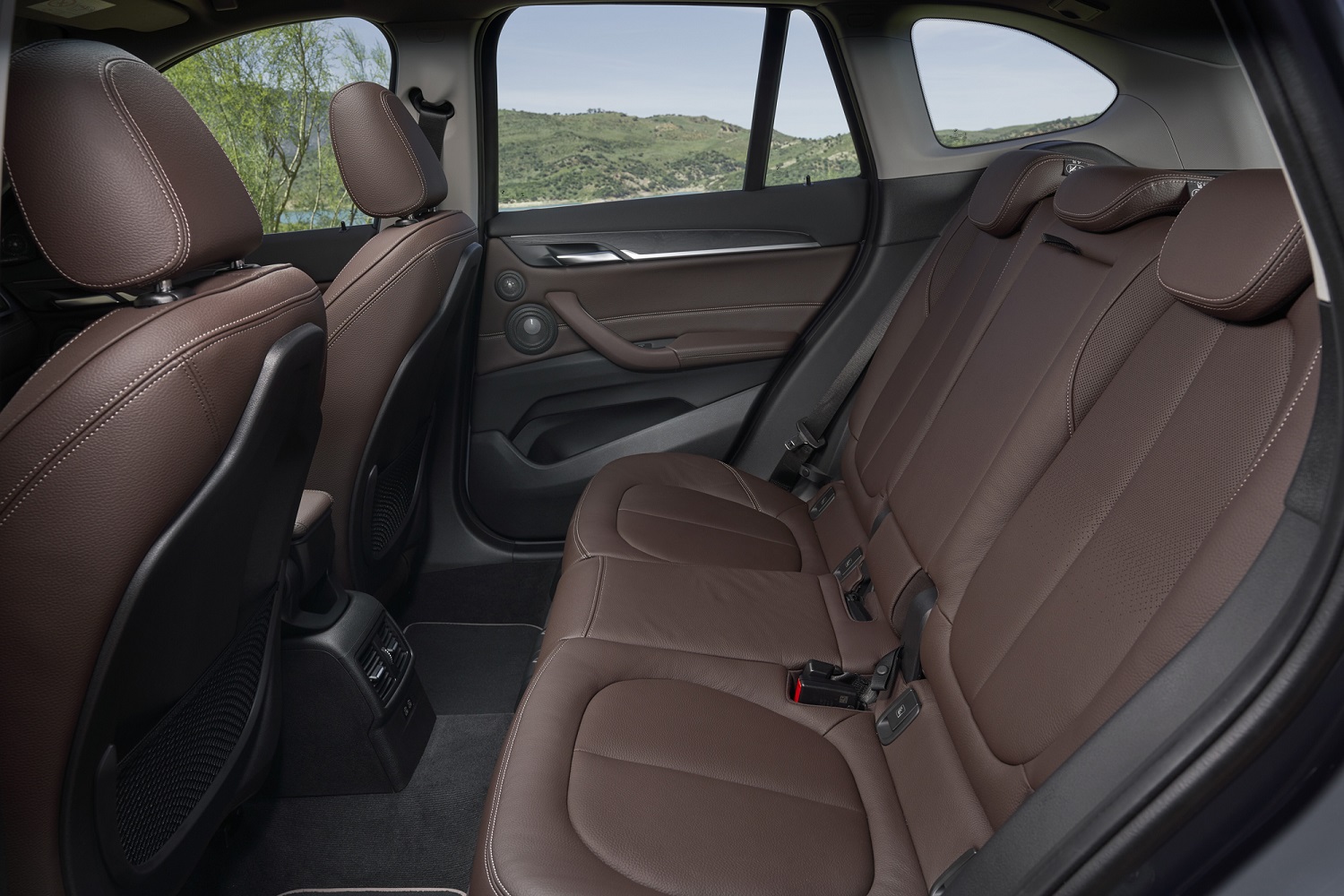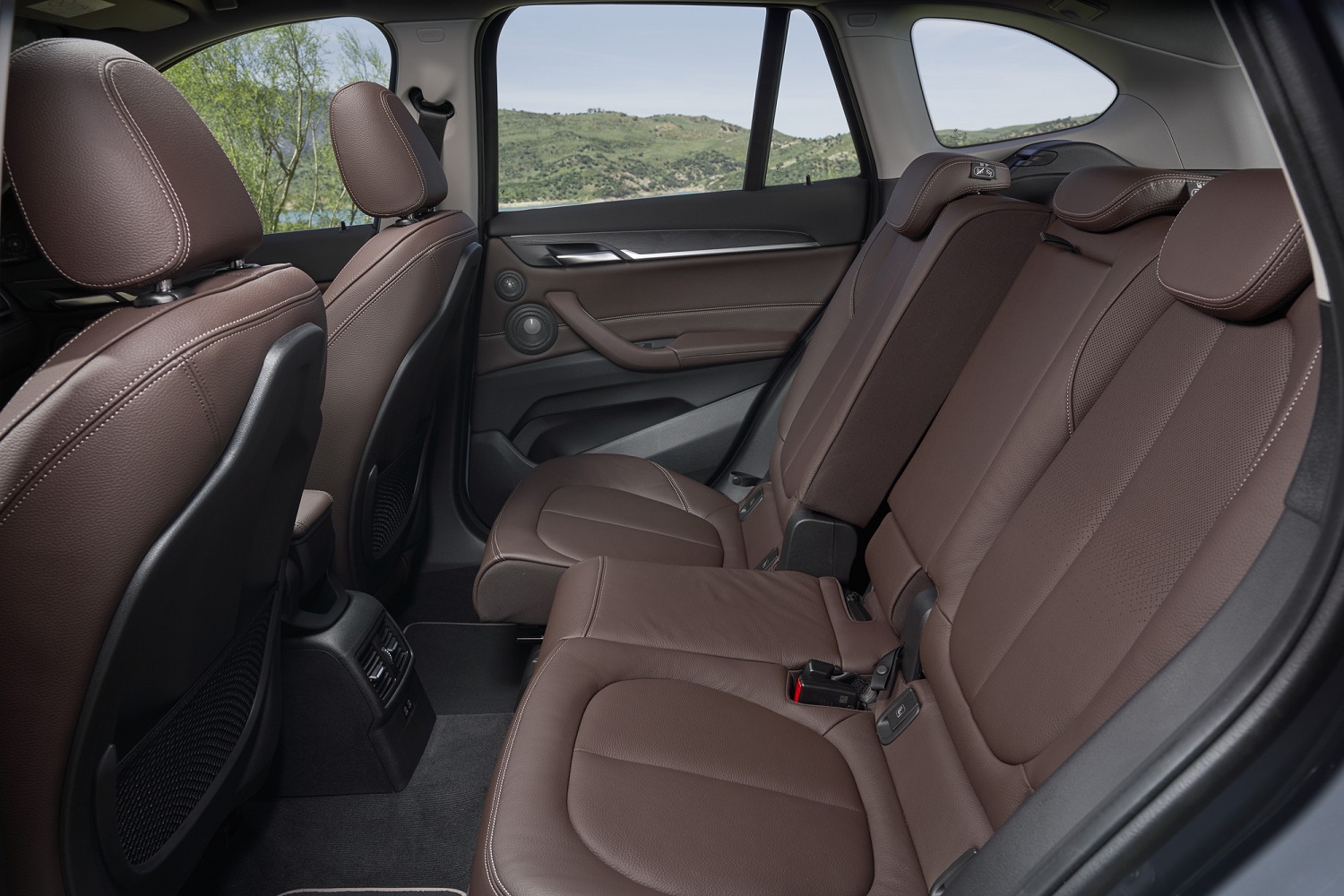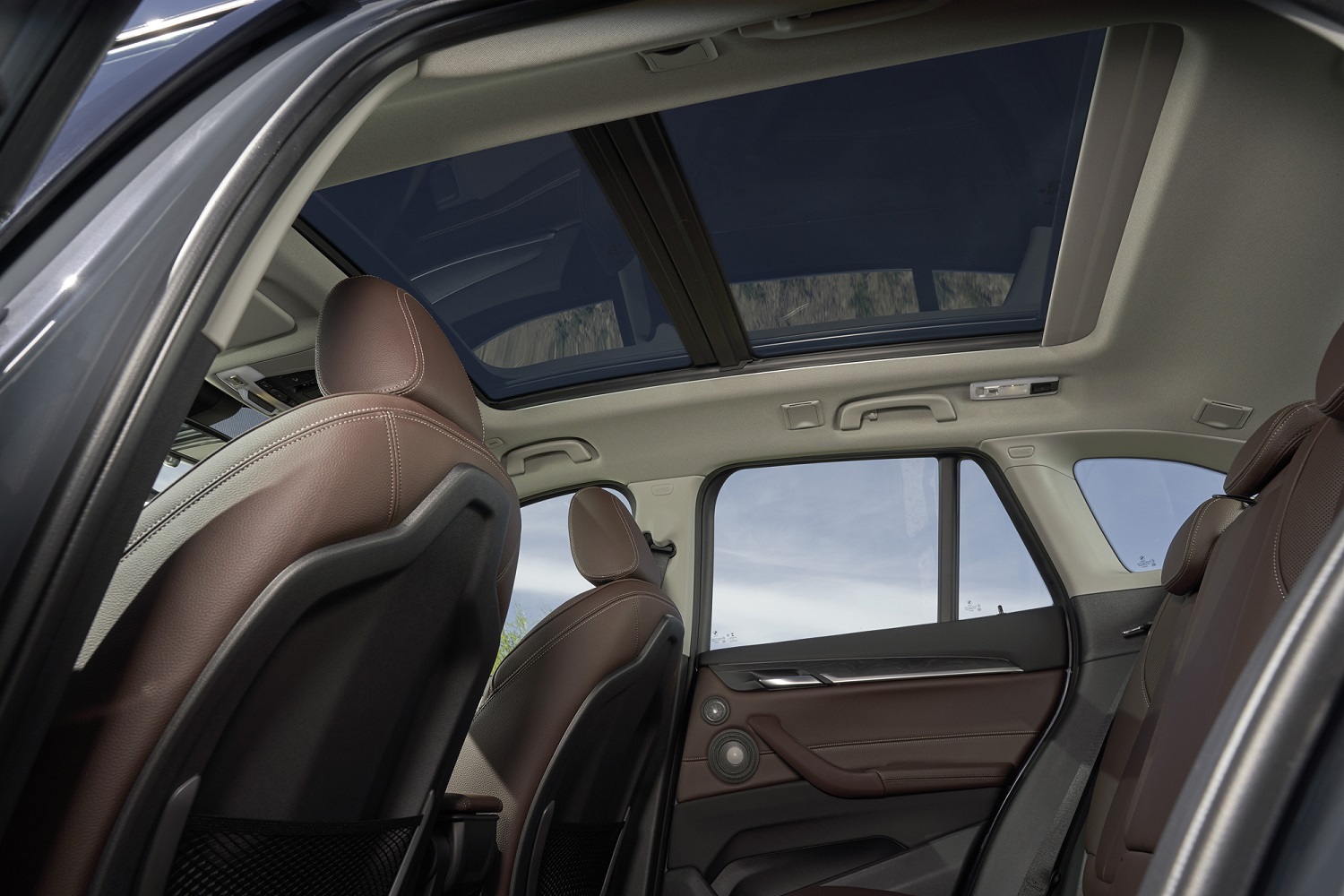BMW designers argue that bigger is much better when it comes to grilles; just look at the 2020 7 Series. The third-generation 1 Series hatchback unveiled for the European market wears a grille that’s bigger than ever before, and now it’s the X1’s turn to go under the knife. The firm’s entry-level crossover will enter the 2020 model year after receiving a series of updates that includes — you guessed it — a bigger grille.
The up-sized snout is complemented by redesigned headlights and new trim on the lower part of the front bumper. Though relatively minor, these changes give the X1 a crisper, more serious look. Walk around back, and you’ll notice BMW made the lights a little bit darker, moved the emblem to the bottom of the hatch, and gave the bumper a new-look design. Additional paint colors and alloy wheel designs round out the exterior changes.
The X1’s interior gets rejuvenated, too. All models receive an 8.8-inch touchscreen that displays the latest generation of the company’s infotainment system. Navigation comes standard. Apple CarPlay compatibility is available, but the X1 still isn’t compatible with Android Auto. Finally, BMW noted it installed an electronic shifter to save a little bit of space on the center console.
There are no major changes to report under the hood. The only engine available is a turbocharged, 2.0-liter four-cylinder that makes 228 horsepower from 5,000 to 6,000 rpm and 258 pound-feet of torque over a broad range that stretches from 1,450 and 4,500 rpm. It spins the front wheels via an eight-speed automatic transmission. Buyers can order all-wheel drive at an extra cost. BMW calls the front-wheel drive model sDrive28i, and it refers to the all-wheel drive variant as the xDrive28i.
BMW will begin shipping the 2020 X1 to its American dealers in the coming months. Pricing information will be published in the weeks leading up to the model’s on-sale date. To add context, the 2019 model starts at $34,950 with front-wheel drive, and $36,950 with all-wheel drive. Neither figure includes a mandatory $995 destination charge. When it lands, BMW’s smallest crossover will compete against the Audi Q3 and the Volvo XC40, among other entries in this growing segment of the new car market.
Editors' Recommendations
- Everything is bigger in Cadillac’s electric Escalade IQ
- Business upfront, 31-inch TV in the back. BMW’s electric i7 is a screening room on wheels
- The all-electric BMW i7 is a home theater on wheels
- 2023 BMW iX M60 is electric, spacious, and surprisingly quick
- 2022 BMW iX first drive: Shifting paradigms


